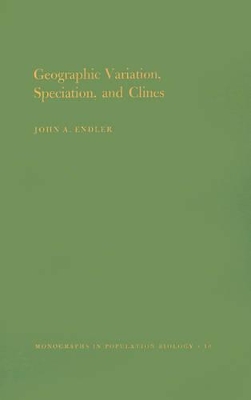Monographs in Population Biology
2 primary works
Book 98
Geographic Variation, Speciation and Clines explores the origins and development of geographic variation, divergence, and speciation. In particular it is concerned with genetic divergence as it is usually found on continents, among groups of populations isolated only by distance. Although earlier writers on this topic considered the effects of geography and dispersal, intense geographic differentiation and speciation were thought to require complete isolation. Professor Endler shows how geographic differentiation and speciation may develop in spite of continuous gene flow. Following a review of the diverse and scattered literature on gene flow and population differentiation, the author discusses the relationships among gene flow, dispersal, and migration. He then summarizes the factors which limit the geographic extent of gene flow, and those which allow steep clines to develop in the absence of barriers to gene flow. His analysis draws on examples from the field, experiments, and single- and multiple-locus models. The mechanism and conditions for parapatric speciation are presented: steepening clines, development into hybrid zones, and the evolution of sexual isolation.
In the final chapter the author considers the interpretation of natural clines and the associated geographic patterns of subspecies and species.
In the final chapter the author considers the interpretation of natural clines and the associated geographic patterns of subspecies and species.
Book 101
Natural selection is an immense and important subject, yet there have been few attempts to summarize its effects on natural populations, and fewer still which discuss the problems of working with natural selection in the wild. These are the purposes of John Endler's book. In it, he discusses the methods and problems involved in the demonstration and measurement of natural selection, presents the critical evidence for its existence, and places it in an evolutionary perspective. Professor Endler finds that there are a remarkable number of direct demonstrations of selection in a wide variety of animals and plants. The distribution of observed magnitudes of selection in natural populations is surprisingly broad, and it overlaps extensively the range of values found in artificial selection. He argues that the common assumption that selection is usually weak in natural populations is no longer tenable, but that natural selection is only one component of the process of evolution; natural selection can explain the change of frequencies of variants, but not their origins.

